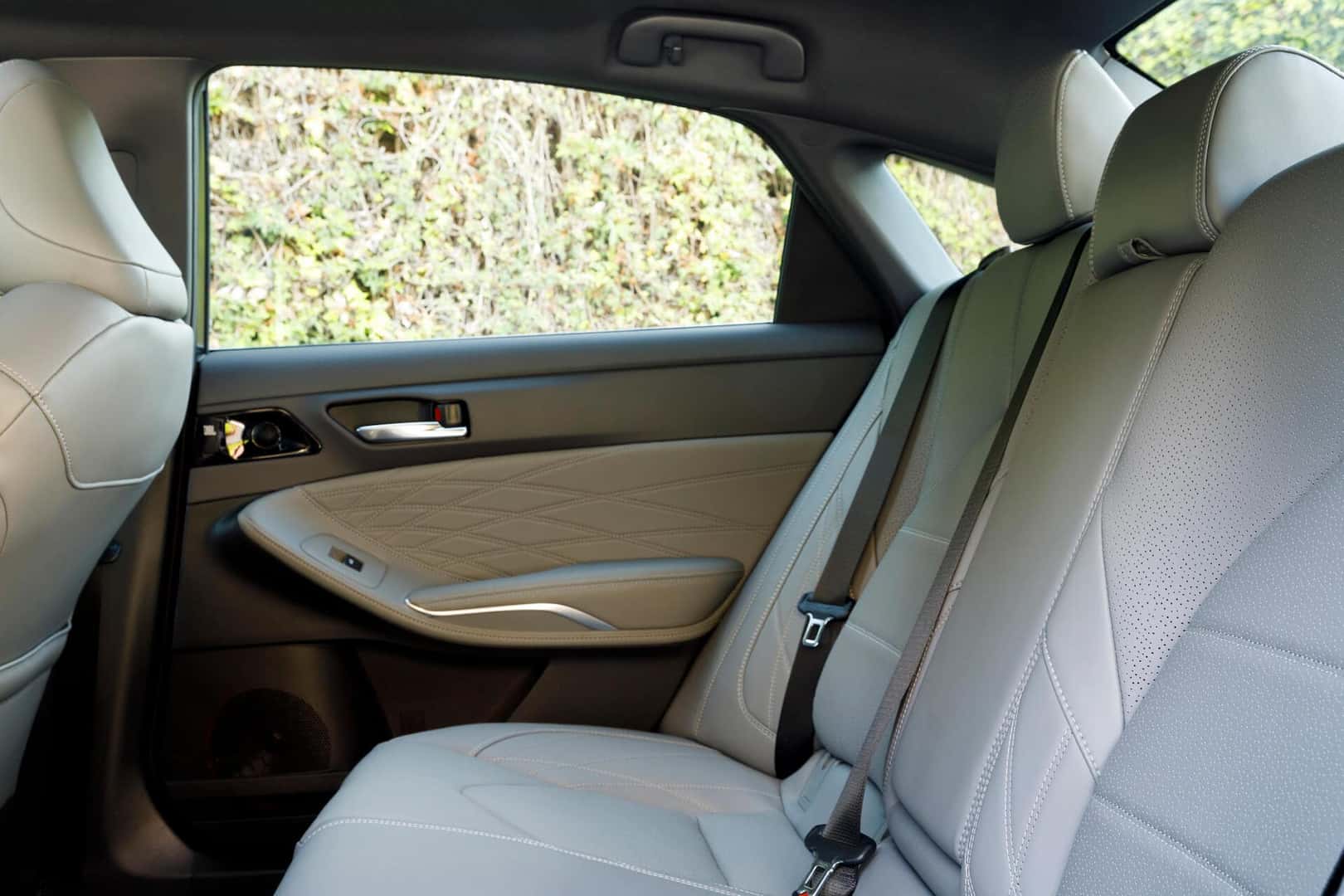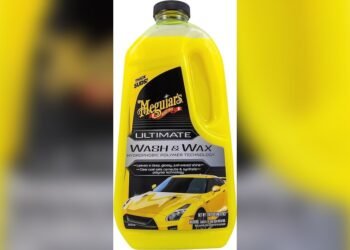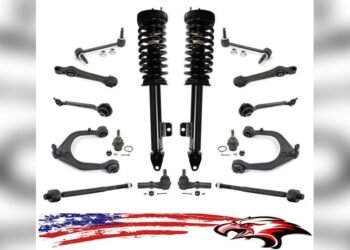When it comes to choosing the right seats for your car, the battle between Softex and fabric seats can feel confusing. You want something comfortable, durable, and easy to maintain—but which option truly fits your lifestyle?
Softex offers a sleek, leather-like look with added durability and easy cleaning, while fabric seats provide breathability and a soft touch at a more affordable price. Understanding the real differences can help you make a choice that keeps your ride stylish and comfortable for years.
Ready to discover which seat material suits you best? Let’s dive into the key features, pros, and cons of Softex vs fabric seats so you can find the perfect match for your driving experience.
Softex Material Features
Softex material offers a unique blend of comfort and practicality for vehicle seats. It aims to combine the best qualities of leather and fabric. This material provides a smooth surface that feels soft yet remains tough. Its features make it a popular choice for car interiors, especially for those seeking durability without sacrificing style.
Composition And Design
Softex is made from a thermoplastic polyurethane blend. This synthetic material mimics leather’s look and feel. It is designed to be animal-free and eco-friendlier. The design focuses on comfort and a premium appearance. Softex has a smooth texture that resists stains and spills.
Durability And Wear Resistance
Softex is highly durable compared to regular fabric seats. It resists cracks and fading over time. The material holds up well against daily wear and tear. It also repels stains better than most fabrics. Softex seats maintain their look for years without special treatment.
Temperature Control
Softex stays cooler than traditional leather in sunlight. It reduces discomfort caused by heat build-up inside vehicles. This feature improves the overall comfort during hot weather. Unlike fabric, it does not trap heat or moisture. Passengers enjoy a cooler and drier seating experience.
Cleaning And Maintenance
Softex is easy to clean with simple soap and water. It does not absorb liquids like fabric seats do. This makes stain removal quick and hassle-free. No special cleaners or conditioners are needed. Regular wiping keeps Softex seats looking fresh and new.
Environmental Impact
Softex is an animal-free, synthetic alternative to leather. It reduces the demand for animal products in car manufacturing. The production process uses fewer resources than real leather. This material supports more eco-conscious vehicle choices. It offers a balance between style and sustainability.
Fabric Seat Characteristics
Fabric seats offer a unique set of characteristics that many drivers appreciate. They bring a natural feel and a cozy environment inside the vehicle. Understanding these traits helps when choosing between Softex and fabric seats.
Fabric seats are known for their comfort and easy maintenance. They also vary in durability depending on the material used. Below is a detailed look at their main features.
Material Composition
Fabric seats are made from woven fibers such as polyester, nylon, or cotton blends. These materials allow the seat to be soft and flexible. They provide a natural texture that many find appealing. The choice of fabric affects the seat’s look and feel.
Comfort And Breathability
Fabric seats are breathable, allowing air to pass through easily. This feature keeps the seat cool in summer and warm in winter. The softness of the fabric adds to passenger comfort. Fabric also absorbs moisture, reducing sweat during hot weather.
Cleaning And Upkeep
Cleaning fabric seats requires regular vacuuming to remove dust and dirt. Stains can be treated with mild soap and water. Fabric is more prone to absorbing spills than synthetic materials. Careful maintenance helps keep the seats looking fresh longer.
Durability Factors
Fabric seats can wear down faster than synthetic or leather options. The material may fade or tear with heavy use. Quality of fabric and stitching influences how long the seats last. Proper care and avoiding sharp objects extend seat life.
Comfort Comparison
Comfort plays a key role when choosing between Softex and fabric seats. Both have unique traits that affect how you feel during drives. This section compares their comfort features clearly.
Temperature Regulation
Softex seats generally stay cooler under the sun than traditional leather. Fabric seats absorb heat less, often feeling cooler in hot weather. In cold climates, fabric tends to warm up faster than Softex, providing a cozy feel.
Softness And Feel
Fabric seats offer a soft, cushioned touch that many find pleasant. Softex mimics leather’s smoothness but feels firmer than fabric. Softex gives a sleek, slightly firm surface, while fabric feels plush and more forgiving.
Breathability
Fabric seats allow air to pass through, reducing sweat during long trips. Softex has a tighter surface, which can trap heat and moisture more easily. Breathability is better with fabric, especially in warm or humid conditions.
Seat Warmers And Cooling
Softex seats often support built-in warmers and coolers effectively due to their smooth surface. Fabric seats may not conduct heat or cold as evenly. Softex can offer a more consistent warming or cooling experience in vehicles equipped with these features.

Credit: www.toyotaofnorthcharlotte.com
Durability And Longevity
Durability and longevity are key factors in choosing between Softex and fabric seats. Both materials have unique qualities that affect how long they last and how well they hold up. Understanding their resistance to damage, ease of cleaning, and maintenance needs helps in making the right choice. This section breaks down these aspects clearly.
Resistance To Cracking And Wear
Softex is a synthetic material designed to resist cracking. It holds up well against daily friction and sunlight exposure. Fabric seats, while softer, tend to wear out faster. Over time, fabric may fade and develop tears. Softex maintains its look longer under similar conditions.
Stain And Spill Management
Softex repels spills better than fabric. Liquids sit on the surface and wipe off easily. Fabric absorbs liquids, causing stains that can be hard to remove. Softex’s smooth surface helps keep seats cleaner and fresher over time. This makes it ideal for families or frequent travelers.
Maintenance Requirements
Softex seats require simple cleaning with mild soap and water. No special conditioners are needed. Fabric seats need vacuuming and occasional shampooing to prevent dirt buildup. Fabric may also require stain removers. Softex’s low maintenance suits busy lifestyles.
Impact Of Usage Over Time
With regular use, Softex retains its shape and color longer than fabric. Fabric fibers can flatten and look worn after heavy use. Softex resists fading and tearing better in harsh conditions. This durability means Softex seats often stay attractive and functional for years.
Cost And Value
Choosing between Softex and fabric seats involves careful thought about cost and value. This aspect plays a big role in your overall satisfaction with the car interior. Understanding how each option affects your budget today and in the future helps you make a smart choice.
Initial Purchase Price
Fabric seats usually cost less than Softex seats at purchase. Softex offers a premium look, which adds to its price. If your budget is tight, fabric might be the better choice. Softex fits well for buyers wanting a stylish interior without leather’s high cost.
Long-term Maintenance Costs
Softex seats require less maintenance than fabric ones. They resist stains and are easier to clean with simple soap and water. Fabric seats can absorb spills, leading to frequent cleaning or replacement. Over time, Softex saves money on cleaning and repairs.
Resale Value Impact
Softex seats may increase a vehicle’s resale value more than fabric seats. Buyers often prefer interiors that look newer and last longer. Fabric can fade or wear out faster, lowering appeal. Softex’s durability keeps the car’s inside looking fresh, attracting better resale offers.

Credit: www.youtube.com
Environmental And Ethical Considerations
Choosing between Softex and fabric seats involves more than comfort and style. Environmental and ethical considerations are important for many buyers. Both materials impact the planet and animal welfare differently. Understanding these factors helps make a responsible choice.
Animal-free Material Benefits
Softex is made without using any animal products. It offers a cruelty-free option for vehicle interiors. This appeals to people who avoid leather due to ethical concerns. Fabric seats also do not use animal materials. Softex mimics leather’s look and feel while sparing animals. This supports animal rights and reduces demand for real leather.
Sustainability Factors
Softex production uses synthetic materials that may consume less water than leather. It avoids the chemical tanning process required for leather hides. Fabric seats often come from natural fibers or blends. Some fabrics use sustainable crops or recycled fibers. Both Softex and fabric can lower environmental impact compared to leather. Yet, synthetic components in Softex rely on petrochemicals. Choosing fabric made from organic or recycled fibers improves sustainability further.
Recycling And Disposal
Recycling options for Softex are limited due to its mixed plastic content. It can take years to break down in landfills. Fabric seats made from natural fibers may decompose faster. However, synthetic fabrics also face recycling challenges. Proper disposal of both materials is important to reduce waste. Some manufacturers work on recyclable or biodegradable seat materials. Consumers should check local recycling rules and choose eco-friendly options when possible.
User Experiences And Reviews
User experiences and reviews offer valuable insights into the real-world performance of Softex and fabric seats. Many car owners share their honest opinions on comfort, durability, and maintenance. These firsthand accounts help potential buyers understand what to expect from each material. Below, we explore key aspects highlighted by users.
Comfort Feedback
Users often find Softex seats softer than fabric but less breathable. Softex feels smooth and cool, especially in warm weather. Fabric seats are praised for their breathability and warmth during cold days. Some users report fabric seats can feel rough after long drives. Softex offers a cushioned feel that many prefer for daily use.
Durability Reports
Many reviews point out Softex’s strong resistance to wear and tear. It does not crack or fade easily, even after years. Fabric seats may show signs of wear sooner, such as fraying or stains. Softex also resists spills better, reducing permanent damage. Users with pets favor Softex for its toughness.
Cleaning Ease
Softex seats are easier to clean than fabric. Most users clean Softex with just soap and water. Fabric seats often require special cleaners and more effort. Stains on fabric can be harder to remove and may leave marks. For busy owners, Softex proves more convenient and less time-consuming.
Common Complaints
Some users dislike Softex’s artificial feel compared to natural fabric. It can feel less breathable in very hot weather. Fabric seats may trap odors and dust more easily. A few users find fabric less comfortable during long trips. Both materials have minor drawbacks, but Softex’s ease of care wins many fans.

Credit: www.youtube.com
Suitability For Different Climates
Choosing between Softex and fabric seats often depends on the climate where you live. Each material reacts differently to temperature changes. Understanding their behavior in various weather conditions helps in making a smart choice for comfort and durability.
Hot Weather Performance
Softex seats handle heat better than fabric. They stay cooler under direct sunlight. Fabric seats absorb more heat and may feel hot and sticky. Softex also resists sweat stains and dries quickly. This makes Softex ideal for hot climates.
Cold Weather Comfort
Fabric seats offer better warmth in cold weather. They retain heat and feel cozy to sit on. Softex seats can feel cold at first touch. They do not trap body heat like fabric does. Adding seat warmers can improve comfort for Softex in cold areas.
Seasonal Adaptability
Fabric adapts well to moderate climates with balanced seasons. It remains comfortable year-round without extra accessories. Softex works well in places with hot summers and mild winters. It requires less maintenance across seasons. Both options can suit different seasonal needs depending on location.
Making The Right Choice
Choosing between Softex and fabric seats is an important decision. Your comfort, car style, and budget all matter. Each material offers unique benefits. Picking the right one depends on your needs and habits. Let’s explore key factors to help you decide.
Lifestyle Considerations
Consider your daily routine and climate. Softex seats are easy to clean and resist stains. They suit families with kids or pets well. Fabric seats feel softer and breathe better. They work great in cooler climates. Think about how often you drive and who rides with you.
Budget And Priorities
Softex seats usually cost more than fabric but less than leather. They offer durability and a premium look without a high price. Fabric seats are more affordable and come in many colors. Decide if you want low maintenance or a softer feel. Your budget guides the best choice.
Vehicle Type Compatibility
Some vehicles match better with Softex seats. Luxury and mid-range cars often use Softex for style and comfort. Fabric seats fit well in economy models and older cars. Check your vehicle’s design and intended use. The right seat material can enhance your driving experience.
Frequently Asked Questions
Is Softex Better Than Fabric?
SofTex offers better durability and easier cleaning than fabric. It feels softer, resists stains, and stays cooler in sunlight. SofTex costs more but provides a premium, animal-free alternative to fabric seats. It balances comfort, maintenance, and eco-friendliness better than standard fabric upholstery.
Does Softex Last As Long As Leather?
SofTex is more durable and easier to maintain than leather. It resists cracking but lacks leather’s softness and breathability.
What Is Toyota Fake Leather Called?
Toyota’s fake leather is called SofTex. It is a durable, animal-free synthetic material that feels soft and stays cooler than real leather. SofTex resists stains, cleans easily, and offers an eco-friendly alternative to traditional leather in Toyota vehicles.
Is Syntex Fake Leather?
SynTex is not real leather. It is a synthetic material designed to look and feel like leather, used in Kia interiors.
What Are The Main Differences Between Softex And Fabric Seats?
Softex is a synthetic leather, smoother and cooler, while fabric seats are softer but absorb heat more.
Conclusion
Choosing between Softex and fabric seats depends on your needs. Softex offers a sleek look and is easy to clean. Fabric seats tend to be more breathable and comfortable in hot weather. Softex lasts longer and resists stains better than fabric.
Fabric seats can feel cozier but may absorb spills more. Think about your budget and lifestyle before deciding. Both options have clear benefits. Pick the one that fits your daily use and comfort best.

















